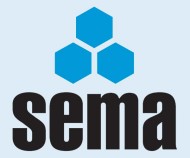 Again this month we bring you two enquiries, the first regarding the safe stacking and storing of boxes of archived paperwork. The second has three questions revolving around best practice.
Again this month we bring you two enquiries, the first regarding the safe stacking and storing of boxes of archived paperwork. The second has three questions revolving around best practice.
Stacking heights for archive storage
Q. We are looking for information regarding the height for stacking boxes in warehouse/storage facilities. The Health and Safety Executive state that the height needs to be ‘appropriate’. This, of course, is a relative term, and we need some guidance as to the criteria that would be used in assessing ‘appropriateness’ of stacking heights. Any information you can provide on this would be most welcome.
A. We have some sympathy for the view expressed that height of stacking needs to be ‘appropriate’ as these issues are very specific to the individual situation and without understanding the operation it is almost impossible to offer any general guidance. Having said this we will try and help as far as possible and would suggest the following publications as a good start point:
Manual handling, solutions you can handle – ISBN 9780717606931 £7.95
Manual handling, manual handling operations regulations 1992, Guidance on regulations – ISBN 9780717628230 £8.95
Both of these are available on mail order at HSE Books, these documents give recommended lifting limits for both male and female personnel and should be considered by anyone who is planning such a system.
We understand you are currently storing your archives in cardboard boxes on a type of racking, so this is also a good start. However, the vertical pitch of the beams will define to some degree the number of boxes you can store in the height assuming of course that the boxes themselves are capable of being stacked on top of each other over a long period without collapsing and you are not overloading the support structure by loading in this way.
You will also need to assess the frequency with which you will need to access the archives as this will also govern if you can store boxes one behind the other as well as on top of each other. In these situations it is not uncommon for boxes to be stored two high and two deep. However, this is not by any means a universal rule and particular circumstances will always dictate special solutions.
SEMA members specialise in all types of storage and are normally very experienced in providing advice on these issues. We would suggest you approach one of the companies whose contact details are available on our web site for some specific advice relating to your particular situation.
A Question of Practice
Q. I am currently doing a Health & Safety course and I am compiling a report on ‘Safe Racking Systems in Distribution’ for my final presentation, could you help with a couple of queries please.
1. Have you encountered any problems with the different coloured beams that are being used in industry – i.e. putting a white pallet onto a yellow beam at 10.2m?
2. Within SEMA Code of Practice’ is there a clause where you give guidance of safe storage of goods at height?
3. Levels of lighting required?
A. We have not had any issues reported to us about contrasting colours of pallets and beams. Most manufacturers of racking choose a high visibility colour be it red, yellow or orange as their standard colour though again almost every supplier is able to supply non-standard colours if requested to do so.
In these days of increased automation modern fork trucks may have auto height selection fitted and providing the warehouse floor is reasonably level this ensures that there is not too much of a problem in the placement of pallets on the racking. Man up driving positions also takes the hazard out of this operation. In addition it is possible to fit a CCTV camera to the mast which also makes placement and retrieval a lot easier.
We would agree that using a conventional truck in the manner you describe is starting to get to the limit of what is possible however this comes down to risk assessments covering the operation. Peering up into the roof against high intensity lighting can be a situation where less illumination helps rather than the other way around. All of these issues are site specific and there is little general guidance, unfortunately.
SEMA Rack Safety Awareness and Inspection Courses
SEMA runs a one-day safety course on Rack Safety Awareness and Inspection. These courses are aimed at end users, giving an in-depth look at the need for inspections, how to conduct an assessment and what actions to take when this is completed. These courses are normally held at the SEMA headquarters but arrangements can be made to hold them at the delegates’ premises.
SEMA Approved Rack Inspectors Qualification
This qualification is aimed at professionals who conduct rack surveys as an integral and significant part of their duties. It involves delegates in undertaking an in-depth SEMA Course, together with an examination and practical assessment. CPD will be an important part of the qualification, demonstrating to end users that SEMA Approved Inspectors maintain a high professional standard.
SEMA Publications
SEMA publishes a number of documents including Codes of Practice, ‘Guides’ and European documents – all of which are available from our Office.
SEMA USERS Club
SEMA runs a USERS Club designed to be of benefit to purchasers and users of storage equipment. Members receive newsletters, access to specialised events and discounted rates on publications and codes of practice.
SEMA Tel: 0121 601 6350 www.sema.org.uk




Comments are closed.